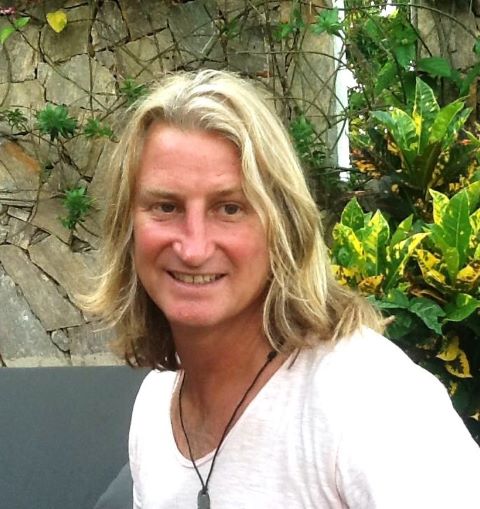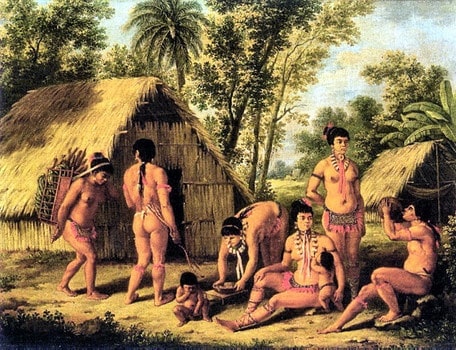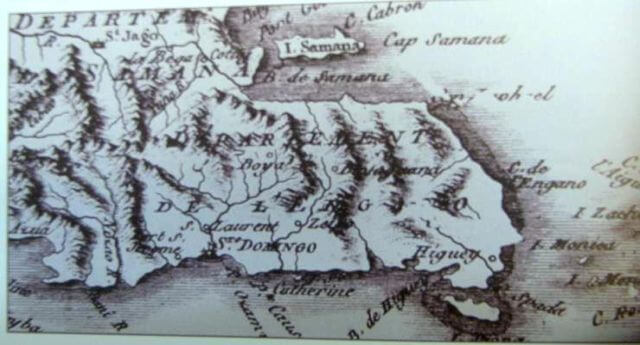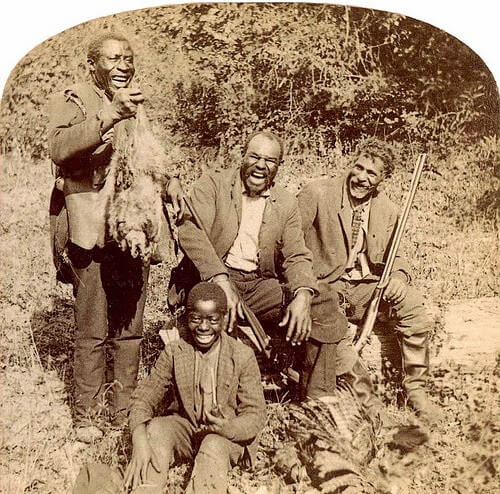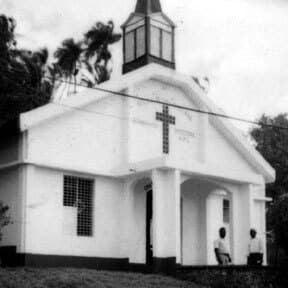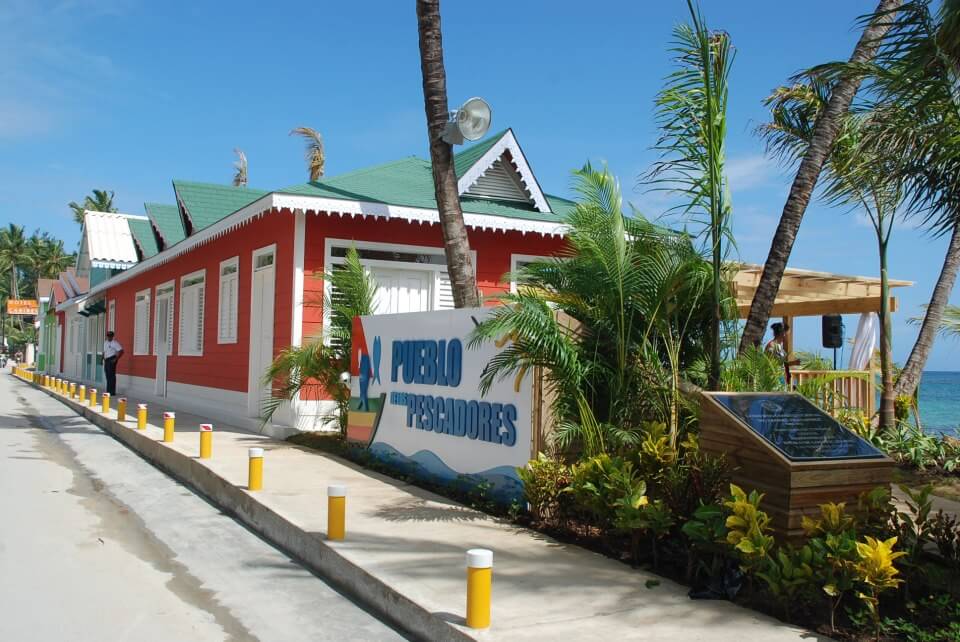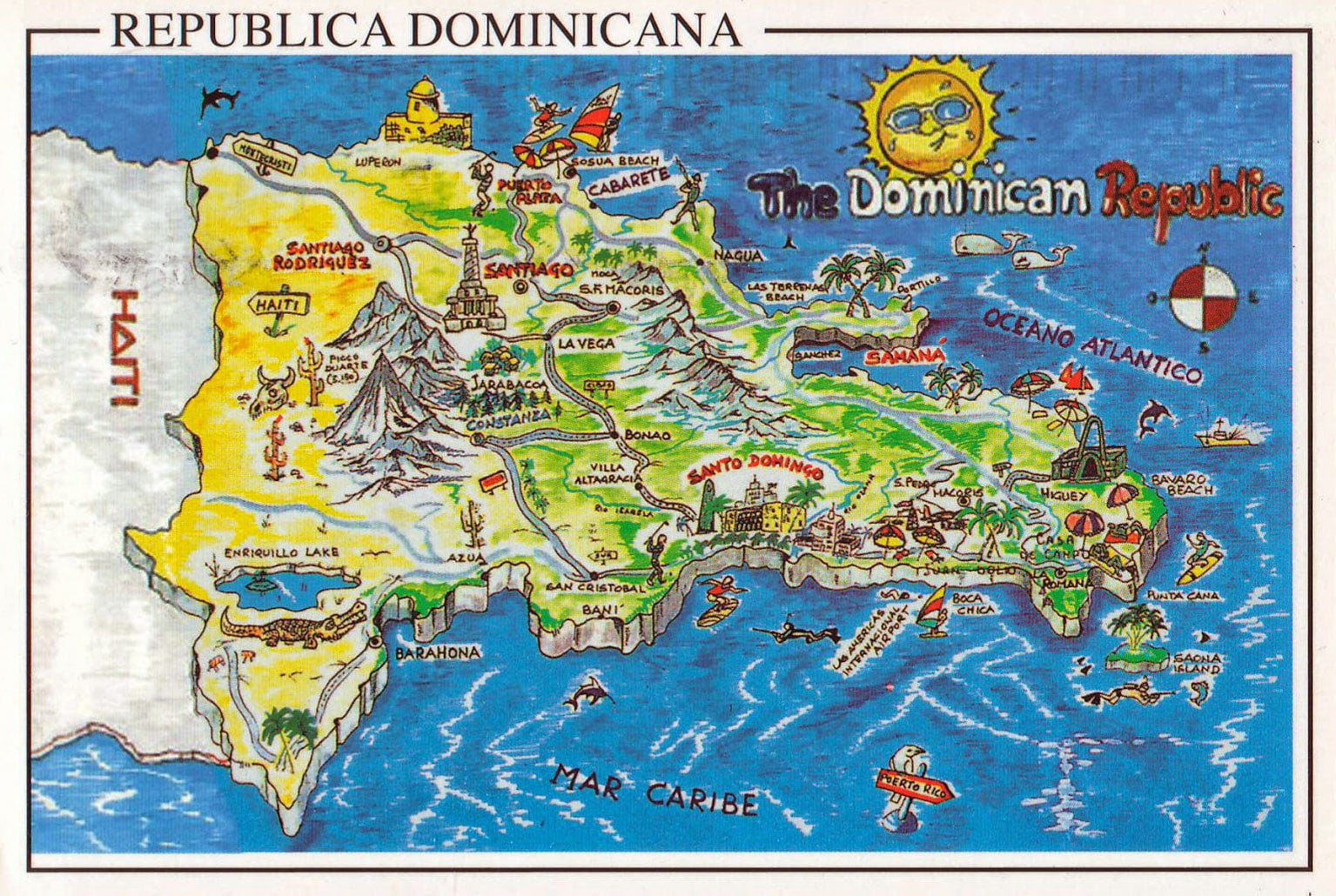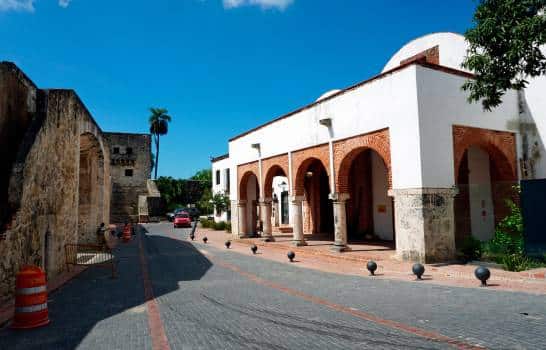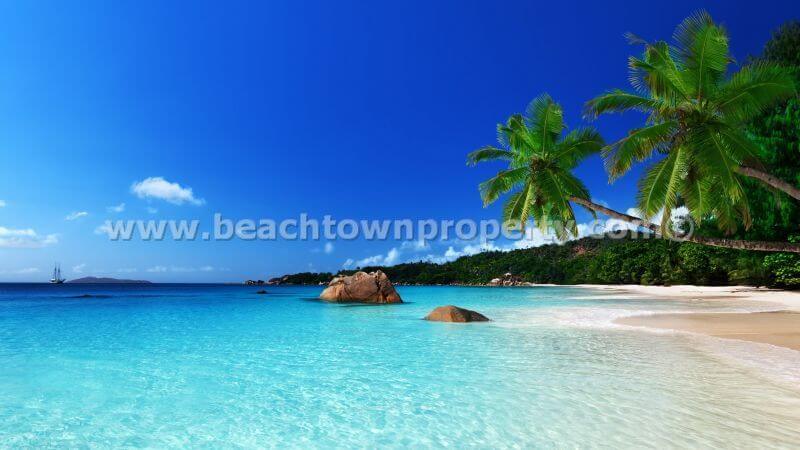History of Las Terrenas and Samana
Two towns on the Samana Peninsula in the Dominican Republic
History of Las Terrenas and Samana by Susan M. Grady of Falls Church, Virginia USA.
The third foreign woman to live in Las Terrenas.
She typed this paper on November 16, 2012.
November 8, 2012
Ms. Susan M. Grady, widow of Dr. Adelphia Dane Bowen, Jr. of Strawn, Texas
Dr. Bowen and Ms. Grady spent three months a year in Las Terrenas from 1977 to 1998 when he sold his house. Dr. Bowen died at his home in Alexandria, Virginia in July 2011. He was 84 years old.
The Birth of The Dominican Republic and Important Dates in its History.
December 5, 1492–Christopher Columbus landed in Haiti and claimed the whole island of Hispaniola
(Today Haiti and the Dominican Republic) for Spain.
1795 —————— The Dominican Republic was given to France under the Peace Treaty of Basel.
1809 —————— Spain, with the aid of the British navy, defeated France at the Battle of Palo
Hincado. Spain regained control of the Dominican Republic.
1821——————- The Dominicans expelled the Spaniards from the Dominican Republic.
1822-1844–Haiti conquered and ruled the Dominican Republic. It was a very bloody Occupation.
1844——————– The Dominicans expelled the Haitians from the Dominican Republic.
The Dominican Republic was free until 1861.
1861——————– The Dominicans returned voluntarily to Spanish rule of the Dominican Republic.
1865——————– The Dominicans defeated the Spaniards. The Dominican Republic became Independent again.
This is Susan Grady and her late Husband Dr. Adelphia Dane Bowen, Jr
History of Las Terrenas and Samana
In the north-eastern corner of the Dominican Republic lies Samana, a lush, rugged peninsula that has witnessed a forgotten moment in the history of the New World.
In the 1820s, thousands of escaping American slaves relocated in Samana, maintaining their North American customs in the isolation of their new Caribbean home.
History of Las Terrenas and Samana
These Americanos (as their descendants still call themselves) lived beyond the reach of most modern influences until a highway was built-in 1969 so that Samana remained a cultural anomaly: an English-speaking Protestant outpost of a Spanish- speaking Catholic country.
Modern Samana is more than an anthropological relic: it is changing into a 21-st century resort, popular especially among European visitors. The town, peninsula and bay, which all share the same name, possess the ingredients of a Caribbean resort.
The town is small and peaceful, nestled between the steeply rising mountains and the gentle waters of the bay, with many types of hotels. The 30-mile long peninsula’s 90 miles of coast has many beaches.
The best beaches are in and near the village of Las Terrenas. The mountains that form the peninsula’s spine rise to heights of 6,000 meters.
Samanas combination of development and isolation is rooted in Dominican politics. The government recognized Samanas potential in the early 1970’s and began a plan to develop the region as a tourist centre.
The old wooden town was torn down (with the exception of the Americanos’ Methodist church, which had been moved plank by plan from England) and a new concrete town was constructed.
Two government-owned hotels were constructed and there were plans for a park, an airport, a new pier and some traffic circles.
The hotels have been sold to private owners and the airport has been upgraded into an international airport.
The best time to see Samanas cultural history is during two annual religious festivals: the week before Easter (Holy Week) and the celebration of the region’s patron saint, Santa Barbara (the Patronales) which takes place at the end of November.
During these periods, thousands of peasants from the countryside come into the town, making it seem like Rio de Janeiro, Brazil at Carnival time.
There are processions, dances, games and contests, some in English, some in Spanish and some in Haitian Creole, a mixture of African and French words. The people dance to the meringue, the Dominican national music.
Samanas history of cultural interactions began in 1493. The first hostile encounter between Europe and the Western Hemisphere took place on January 12, 1493, when an army of Taino Indians shot with bone-tipped arrows at Christopher Columbus’ ship.
The site where this happened is called the Gulf of Arrows or Bahia de las Flechas.” (Columbus named it.) It is three miles east of the city of Samana. It has no sign to mark it, but the local people know where it is.
Pirates lived here until the city of Santa Barbara de Samana was founded in 1756 by people from the Canary Islands who were moved by the Spanish government from there to Samana to keep the British from settling in Samana.
When Haiti, which shares the island of Hispaniola with the Dominican Republic, declared its independence from France in 1804, many French plantation owners and their slaves left Haiti and went to Samana and also to the eastern part of Cuba.
Napoleon Bonaparte wanted to build a capital for his New World Empire in Samana. He had plans drawn up for a new city there to be called Napoleon City, but the British came in and prevented him from building it.
In addition, Napoleon became involved in wars in Europe, so he gave up this plan. In 1822, Haiti invaded the Dominican Republic and occupied it for twenty-two years.
It was a bloody occupation.
The most important event in the development of Samana occurred about this time. Haiti’s leader, Jean Pierre Boyer, made contact with abolitionist groups in Philadelphia, Pennsylvania, United States and paid money for them to send to Samana by ship all the freed slaves they could.
He also paid for their resettlement in Samana. Boyer said he wanted to help the slaves obtain their freedom, but the Dominicans said Boyer wanted to repopulate this area over which he had taken control with people who would support him.
Nearly six thousand former slaves made the voyage from the United States to the Dominican Republic. Many died in Samana or returned to the United States because they could not adjust to the changes in the climate and culture they found in Samana. About two thousand of them stayed in Samana and prospered.
These immigrants retained their cultural traditions. They ran their own schools, paying for the importation of English teachers, and maintained Protestant churches (primarily Methodist). Rafael Trujillo, who was dictator of the Dominican Republic from 1930-1938 and 1942-1952, did not like the cultural independence of Samana.
He introduced the Spanish language into Samana and forced the people to speak it. Anyone heard speaking English was publicly beaten by armed men.
Most of the people in Samana today are bilingual. The English spoken is colloquial English that was spoken by the slaves in the southern United States a century ago.
The remaining Americanos have farms in small mountain villages all over the Samana Peninsula. They grow coconuts, coffee, cacao, mangoes and citrus fruits, which they sell.
In 1824 a ship, the Turtle Dove, filled with freed slaves from the United States (slaves who had escaped from the southern part of the United States and run away to the northern part of the United States) left from Philadelphia, Pennsylvania (a state in the northern part of the United States).
The ship was purchased by two Protestant sisters named Freeman who were of the Quaker Protestant religious faith.
The ship was sailing to Liberia, a country in West Africa founded by freed American slaves in 1820. There was a big rainstorm in the Atlantic Ocean in front of Las Terrenas and the ship sank. The freed slaves swam to Las Terrenas.
They spoke English. Their great grandchildren still live in Las Terrenas and they speak English. They are called cocolos.
On Sunday, you may attend a religious service at an African Methodist Episcopal (AME) Church in the village of El Limon near Las Terrenas. There you will hear people singing American spiritual hymns in English.
During the administration of the United States President Ulysses S. Grant (President 1869-1876), a proposal was made by the United States, at the suggestion of the Dominican President Buenaventura Báez, to annex the Dominican Republic and to use Samana Bay as a base for the United States Navy.
Samana Bay is well suited for this purpose, as it is wide, sheltered at its seaward end, long and has deep water.
An American envoy was sent to Santo Domingo, Dominican Republic by President Grant. signed two treaties providing for the annexation of the Dominican Republic by the United States and for the United States to lease Samana Bay for ninety-nine years.
The United States Senate, which must approve all treaties with foreign countries, refused to ratify both of these treaties so the Dominican Republic never became part of the United States.
Condé Nast Traveler, a magazine from the United States, said in its November, 1996 issue that the second most beautiful beach in the world is Playa Rincon, which is northeast of the city of Samana.. The road to Playa Rincon is not good. In order to go there you must have a Jeep or a four-wheel drive truck.
Between World War I and World War II, a Polish-Jewish family named Paiewonski (one of the first members was named Joseph or José (in Spanish) Paiewonski.) bought much land in Las Terrenas and just west of Las Terrenas near the El Portillo Resort, next to an airport for small planes.
They built general stores all over the Dominican Republic and became very wealthy.
In the 1940s, they brought a Dominican man named Señor Peña from Puerto Plata to work for them on their farm.
He came by boat from Puerto Plata to Las Terrenas. (There was no road over the mountain from Sanchez to Las Terrenas until 1969.)
In addition to fruits and vegetables, this Jewish family had coconut, cacao and coffee plantations — these foods were exported.
In 1955 Señor Gigillo Espinal, who was born in Sanchez, came from Sanchez to work in Las Terrenas for the Paiewonski family.
In 1975, he had a small grocery store, a colmado in Spanish, on the road by the sea some two miles west of Las Terrenas, between Las Terrenas and El Portillo. In 1977, he moved his store into Las Terrenas on the beach next to the police station. You could only buy rice, black beans, dried codfish and rum at the store. The store in Las Terrenas is where Hotel Diny’s restaurant is today.
The first mechanic in Las Terrenas was Señor Ezequiel (Sequiel) Lara. He came from Samana where he was apprenticed to a mechanic.
On August 15, 1971, he was brought by the Paiewonski family to work for them in Las Terrenas. Mr. Lara opened his own auto repair shop in 1981 in Las Terrenas.
History of Las Terrenas and Samana
In 1975, Las Terrenas was a small village of farmers and fishermen. Everyone spoke Spanish. Las Terrenas had no food to buy, no stores, no gasoline station, no ice, no electricity, no telephones, no cars, no motorcycles, no post office, no newspapers, and no tourists.
Las Terrenas was very beautiful and quiet. The road over the mountain from Sanchez to Las Terrenas was first built in 1969. It fell into disrepair and in 1975 it was in very bad condition. It was repaved in 1989 and again in 2010.
There was no road to Playa Bonita and Playa Coson in 1975. You had to drive slowly on a dirt path across the private coconut plantation of Señor Maximo Galvan to go to those beaches. Señor Galvan owned the largest general store in Sanchez. It was called Casa Galvan.
A private Dominican company brought electricity to the village in 1994. In 1997, a public water system was installed, bringing water from a large river in the mountains to individual homes and businesses. The telephone office opened in 1991. There is still not a public sewage disposal system for the village.
Important dates of the Early Days, Important people, places and events in Las Terrenas
Dr. Miguel Polanco – medical doctor 1973
Dr. Raul Languasco Chang – lawyer from Sanchez 1977
Mr. Sequiel (Ezequiel) Lara – car mechanic 1977
First Clinic 1973
Dominican Elementary School 1977
Señor Gigillo Espinal’s store and bar – facing beach next to police station 1977
Catholic Church by police station facing beach 1977 U.S. Congressman Donald Jackson’s restaurant on beach next to (to left of) cemetery 1977 Marine Police – facing beach In 1988 it moved to the entrance to town on left hand side on road going over the mountain to Sanchez. 1977 House of Dr. Adelphia Dane Bowen, Jr. – Economic 1977 Counselor U.S. Embassy Santo Domingo 1974-197 First private house of a foreigner – In back of Casa Nina Hotel on left side in front of swamp Now it is two story Club Las Terrenas Hotel – Now Hotel Tropic Banana 1977 El Reposo Hotel – Dominican owned. Now it is 1977 Las Cayenas Hotel Hotel Atlantis German owned at Playa Bonita 1981 El Portillo Hotel 1982 Señor Gigillo’s restaurant – Restaurant Diny 1982 Chez Paco’s Restaurant – next to (to left of) cemetery 1983
Dominican Newspapers first delivered 1983 Movie about Christopher Columbus filmed byJanuary American-Italian producers – April 1984 Las Terrenas became incorporated town April 10, 1984
French school opened 1986
National Police – facing the Atlantic Ocean end of 1987
Ferretería Polanco – first hardware store 1988
Road over the mountain to Sanchez repaved 1989
Pharmacy 1991
Cacao Beach Hotel May, 1991
Telephone Office May 1991
Gasoline Station 1992
Electricity 1994
Water 1997
A brief insight Into Susan and her late husband Dr. Adelphia Dane Bowen, Jr
There lives in the early days of Las Terrenas.
Is It Possible To Live Without Electricity?
Electricity did not come to the village of Las Terrenas, Samana Province, Dominican Republic, until 1994.
This article explains how Dr. Dane Bowen and Ms. Susan M. Grady lived in our beach house there before the electricity arrived.
Lights
First – kerosene lamps They were smelly.
Second – Coleman propane gas camping lantern – It consists of a metal and glass lamp with mantles sitting on a pole that sits in a small, round propane gas tank. It was hot and hissed.
Third – Solar powered lights and ceiling fans in the ceilings of the rooms in the house The lights and ceiling fans were powered by solar panels on the roof of the house. Mr. Robert D. Green of Somers Point, New Jersey, an engineer and Susan Grady’s younger brother, helped us to purchase the solar panels.
We brought our own flashlights and batteries to use also. We could not buy them in Las Terrenas.
Stove and Refrigerator
Refrigerator – tall regular refrigerator with a freezing compartment up above. It ran off a tank of propane gas.
Stove – three burner Coleman propane gas camping stove It ran off a tank of propane gas.
One six-foot tall propane gas tank ran the refrigerator and stove for one month. We always kept extra propane gas tanks on hand because we had to send the empty tanks on a truck that took them to the town of Nagua, fifty miles away, to be refilled.
Oven – We bought a metal collapsible Coleman camping oven and set it on top of two of the burners on the stove. It was large enough to use to bake a square pan of cornbread or to bake a medium size chicken.
Water
Drinking water – We collected it from the rainwater off the roof’s gutters. The rainwater flowed into metal tanks. We ran a pipe from the metal tanks into the kitchen. We never had to boil the water as Las Terrenas is in a rural area with no industries. Where the gutters ran into the tanks we put screen wire to catch any dirt or leaves from the roof. Every time we came to Las Terrenas, we put up clean screen wire.
Water for washing dishes and the bathroom – We had a water well. First, we used a small gasoline powered generator to pump water from the well up twenty feet into a huge cement storage tank. From the tank the water flowed by gravity — one pipe going into the kitchen and one pipe going into the bathroom. Later the water pump was powered by a solar energy pump.
Hot water – The barrels to collect the rainwater were painted black. The sun heated the water and we put pipes in the barrels so that we could take a hot shower outside. There was no hot water in the house.
Health Measures
We brought Combat Cockroach Poison from the United States and put it on the floor and in the cupboards in the house to kill cockroaches.
We brought D-Con Rat Poison from the United States and put it on the floor and in the attic in the house to keep the coconut rats (The rats that live in the coconut trees.) out of the house.
Every morning the maid wood sweep our tile floors in the house. Then she would put one cup of kerosene in the mop water and mop the floors. The kerosene kept insects away.
The windows of the house had louvers covered with screen wire on the outside. The windows had no glass. Because of this, we had many small lizards that came into our house.
They were not poisonous and did not bother us. I liked to look at them.
Our existence here was idyllic! We did not miss not having a newspaper. If we wanted to do so, we listened to the BBC from England and the Voice of America from the United States on Susan’s shortwave radio at night.
What a wonderful account of life in Las Terrenas by two of the first ever “Gringos”
I have not removed or edited Susan’s original script and have been allowed to share this account with you all by Susan Grady herself.
Some places mentioned are no longer there or called the same in Susan script.
But one thing that still remains and will never change is the wonderful people of Las Terrenas both Past, Present and Future.
I am sure every one has some great stories and photographs to share about Las Terrenas please forward these to me so I can share them with the World!

